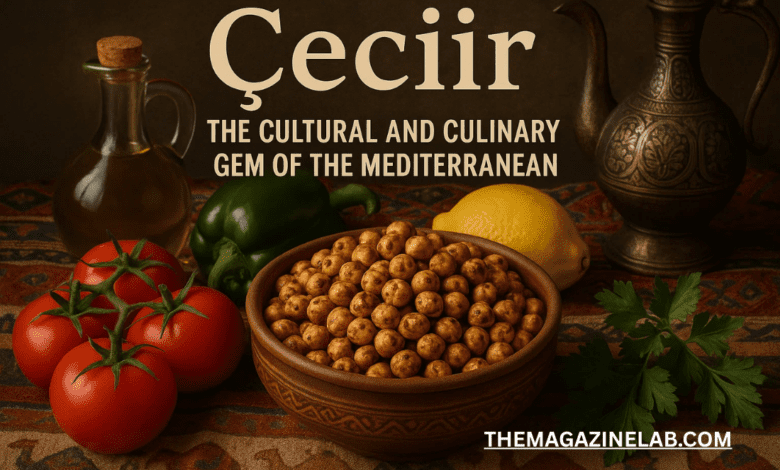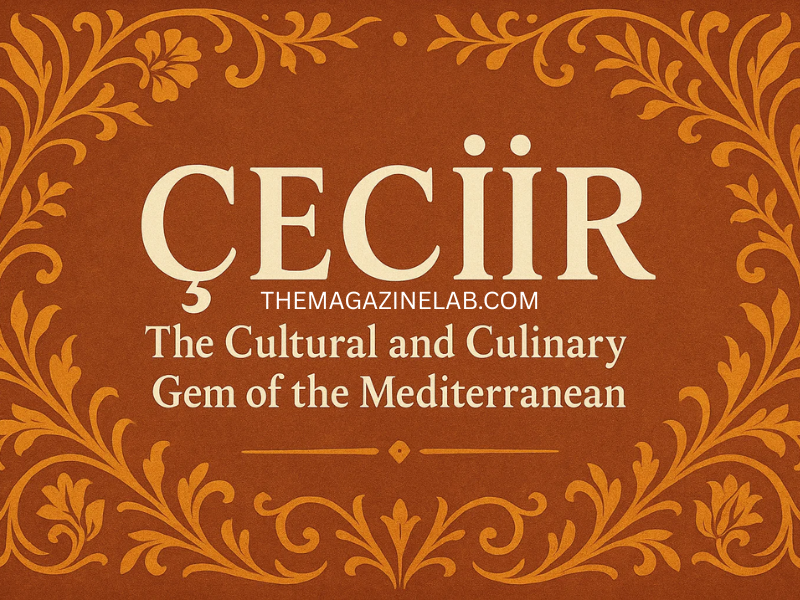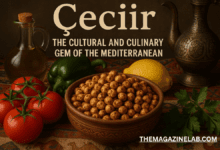Çeciir: The Cultural and Culinary Gem of the Mediterranean

When exploring the rich culinary traditions of the Mediterranean and Middle Eastern regions, one word that often surfaces is “Çeciir.” This intriguing term refers to a beloved ingredient that has played an essential role in the diets, agriculture, and traditions of many cultures. While it might sound unfamiliar to some, çeciir has ancient roots and continues to hold cultural, nutritional, and economic importance in modern times.
In this article, we will dive deep into the origin, meaning, culinary uses, health benefits, and cultural significance of çeciir, providing a complete picture of why this humble food is so revered.
1. What is Çeciir?
At its core, çeciir is a traditional term that refers to chickpeas (also known as garbanzo beans). The word “çeciir” is derived from old regional dialects across Anatolia and the Middle East, where chickpeas have been cultivated for thousands of years.
These small, round legumes have a nutty flavor and a grainy texture that makes them versatile for a variety of dishes — from stews and soups to snacks and desserts. In ancient times, çeciir was considered a “food of the people,” prized for its affordability, nutrition, and long shelf life.
2. The Historical Roots of Çeciir
The history of çeciir stretches back over 7,000 years, with archaeological evidence showing chickpea cultivation in regions such as Turkey, Syria, and the Levant. Ancient civilizations, including the Egyptians, Greeks, and Romans, valued çeciir not only as a staple food but also for its symbolic and medicinal uses.
In ancient Rome, roasted çeciir was sold as a street snack, while in Egypt, it was believed to bring good fortune and fertility. Over time, the cultivation of çeciir spread across Asia, Africa, and Europe — making it one of the most globally recognized legumes today.
3. Çeciir in Culinary Traditions
3.1 Mediterranean Dishes
In the Mediterranean region, çeciir serves as a foundation for many iconic dishes. The most popular examples include:
- Hummus: A creamy dip made from mashed çeciir, tahini, lemon juice, and garlic.
- Falafel: Deep-fried balls or patties made from ground çeciir mixed with herbs and spices.
- Chickpea stew: A comforting dish often simmered with tomatoes, olive oil, and aromatic herbs.
3.2 Middle Eastern and South Asian Cuisine
In Middle Eastern countries, çeciir is an essential ingredient in everyday meals. In India and Pakistan, chickpeas (known locally as chana) are used in curries, salads, and snacks such as chana chaat. Similarly, in the Levant, çeciir is paired with rice, lamb, or vegetables for wholesome, protein-rich meals.
3.3 Western Adaptations
In recent decades, çeciir has gained immense popularity in Western health and vegan cuisine. Chickpea pasta, roasted çeciir snacks, and chickpea flour-based desserts are now common in health stores and restaurants worldwide.
4. Nutritional Benefits of Çeciir
4.1 A Powerhouse of Plant Protein
One of the main reasons çeciir is valued in global cuisine is its exceptional nutritional profile. A single cup of cooked çeciir provides:
- Around 15 grams of protein
- High amounts of fiber
- Essential vitamins such as B6, folate, and iron
4.2 Supports Digestive Health
Thanks to its high fiber content, çeciir promotes healthy digestion and regular bowel movements. It also helps maintain gut health by supporting beneficial bacteria in the intestines.
4.3 Ideal for Weight Management
Because çeciir is rich in both protein and fiber, it helps increase satiety, keeping you full for longer periods. This makes it an excellent food choice for those looking to manage their weight naturally.
4.4 Heart and Blood Sugar Benefits
Regular consumption of çeciir can help lower cholesterol levels and regulate blood sugar, making it beneficial for people with diabetes or cardiovascular conditions.
5. Çeciir in Traditional and Modern Medicine
In many ancient cultures, çeciir was more than just food — it was medicine. It was believed to:
- Boost energy and stamina
- Aid in digestion
- Promote clear skin and healthy hair
Modern science supports many of these claims. The nutrients in çeciir — particularly its antioxidants, vitamins, and minerals — contribute to overall well-being. Moreover, plant-based diets that include chickpeas have been linked to longevity and reduced chronic disease risks.
6. The Cultural Symbolism of Çeciir
6.1 Symbol of Prosperity
In several Mediterranean and Middle Eastern cultures, çeciir symbolizes abundance and nourishment. During festive occasions, it is common to find dishes made with chickpeas as part of celebratory meals.
6.2 Role in Religious Traditions
In some regions, çeciir plays a part in religious and spiritual ceremonies. It is offered during fasting months, harvest festivals, and as charity food for the poor.
6.3 Social Bonding and Sharing
Preparing çeciir-based dishes like hummus or falafel often brings people together. Sharing these foods during gatherings reinforces hospitality, unity, and cultural pride.

7. Çeciir in the Modern World
Today, çeciir has transcended its traditional boundaries to become a global superfood. Its adaptability makes it suitable for various diets:
- Vegan and vegetarian: As a plant protein alternative.
- Gluten-free: When used in chickpea flour.
- Low-glycemic diets: Ideal for managing blood sugar.
Sustainability is another reason çeciir is gaining traction. Chickpeas require less water and fertilizer than many other crops, making them an eco-friendly food source for the future.
8. Innovative Uses of Çeciir
Beyond traditional cooking, çeciir is now found in a wide range of modern products:
- Chickpea snacks – roasted or spiced.
- Chickpea pasta – a gluten-free substitute for wheat.
- Chickpea flour – used for baking or thickening sauces.
- Chickpea milk – a new dairy-free alternative.
These innovations reflect how çeciir continues to evolve with changing global tastes and health trends.
9. How to Cook and Store Çeciir
9.1 Cooking Tips
To enjoy çeciir at its best:
- Soak dried çeciir overnight to soften it.
- Boil for about an hour until tender.
- Season with herbs, salt, or spices to enhance its natural flavor.
Alternatively, canned chickpeas offer convenience and can be used directly in recipes.
9.2 Storage
Keep dried çeciir in an airtight container in a cool, dry place. Cooked chickpeas should be refrigerated and consumed within 3–5 days, or frozen for longer storage.
10. The Future of Çeciir
As global interest in sustainable and plant-based foods grows, çeciir stands at the forefront of the movement. Farmers are experimenting with new cultivation techniques, while chefs are incorporating chickpeas into gourmet cuisine.
With its rich history, nutritional value, and cultural depth, çeciir is not just a food — it’s a symbol of resilience, adaptability, and shared human heritage.
Conclusion
In conclusion, çeciir is far more than a simple legume — it’s a bridge between ancient traditions and modern lifestyles. From the deserts of the Middle East to contemporary kitchens worldwide, çeciir continues to nourish bodies and connect cultures.
Its versatility in cooking, impressive nutritional profile, and sustainable nature make it a food of the past, present, and future. Whether enjoyed as hummus, falafel, or a humble bowl of stew, çeciir reminds us that sometimes the most ordinary ingredients hold extraordinary stories.

